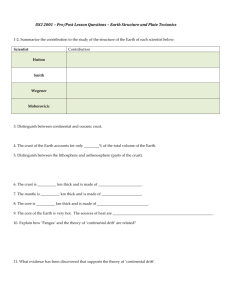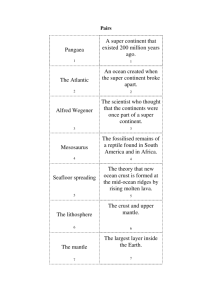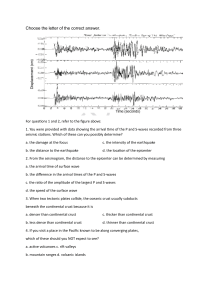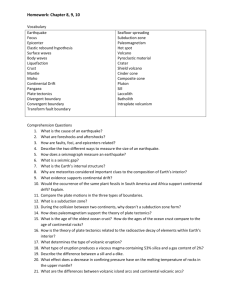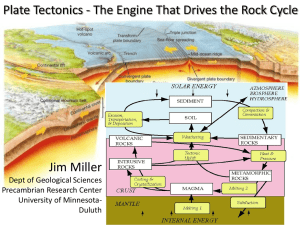Unit 4 Test corrections
advertisement
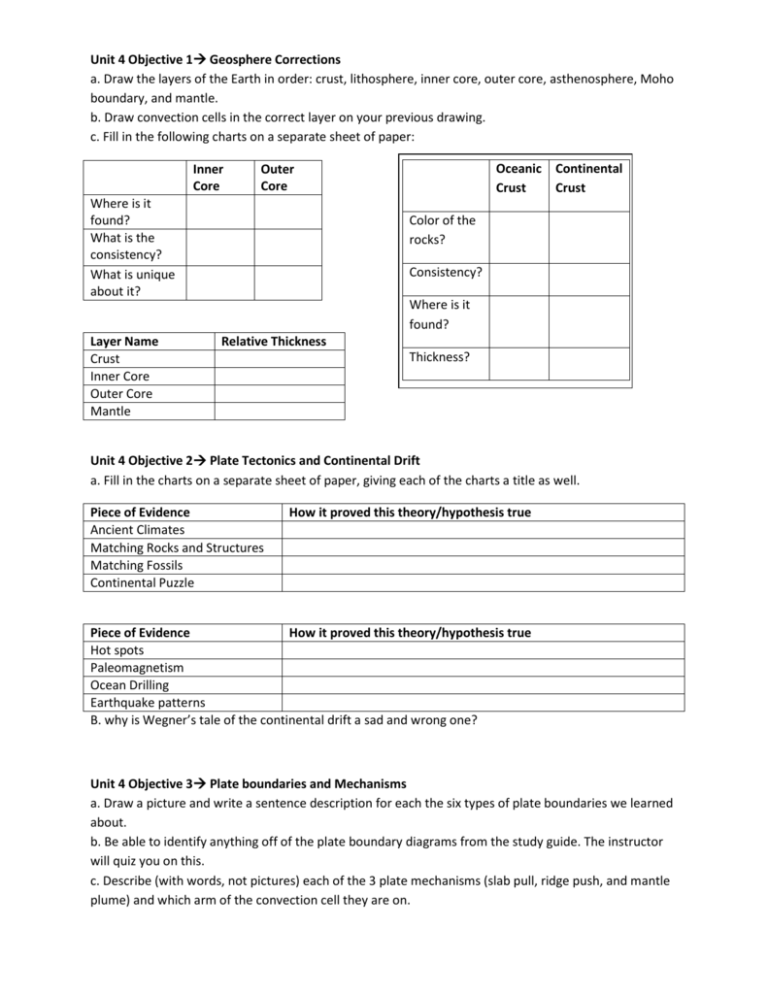
Unit 4 Objective 1 Geosphere Corrections a. Draw the layers of the Earth in order: crust, lithosphere, inner core, outer core, asthenosphere, Moho boundary, and mantle. b. Draw convection cells in the correct layer on your previous drawing. c. Fill in the following charts on a separate sheet of paper: Inner Core Where is it found? What is the consistency? What is unique about it? Layer Name Crust Inner Core Outer Core Mantle Oceanic Crust Outer Core Continental Crust Color of the rocks? Consistency? Where is it found? Relative Thickness Thickness? Unit 4 Objective 2 Plate Tectonics and Continental Drift a. Fill in the charts on a separate sheet of paper, giving each of the charts a title as well. Piece of Evidence Ancient Climates Matching Rocks and Structures Matching Fossils Continental Puzzle How it proved this theory/hypothesis true Piece of Evidence How it proved this theory/hypothesis true Hot spots Paleomagnetism Ocean Drilling Earthquake patterns B. why is Wegner’s tale of the continental drift a sad and wrong one? Unit 4 Objective 3 Plate boundaries and Mechanisms a. Draw a picture and write a sentence description for each the six types of plate boundaries we learned about. b. Be able to identify anything off of the plate boundary diagrams from the study guide. The instructor will quiz you on this. c. Describe (with words, not pictures) each of the 3 plate mechanisms (slab pull, ridge push, and mantle plume) and which arm of the convection cell they are on. Unit 4 Objective 4 Earthquakes a. Draw a 4 panel cartoon with 1) a man standing 2) a man being shook by a P-wave 3) a man being shook by a S-wave 4) a man being shook by a surface wave. b. Draw a picture of a seismogram and a seismograph. Please be sure to label which is which. c. Describe elastic energy and how it relates to an earthquake. d. Draw a picture of how a seismologist uses seismograms to find an earthquake epicenter. e. Define an epicenter and a focus. Unit 4 Objective 5 RYM a. How do you make….? 1) Sedimentary Rocks? 2) Igneous Rocks? 3) Metamorphic Rocks? b. Define erosion and how it has changed on Earth. c. Where doe sediment come from? Why is it needed in soil? d. Describe how a loss of vegetation can help a mass movement to move quicker. e. Define mechanical and chemical weathering and give 2 examples. f. Write a hypothesis and come up with 2 variables for the question “Why do maggots grow out of mushrooms?


